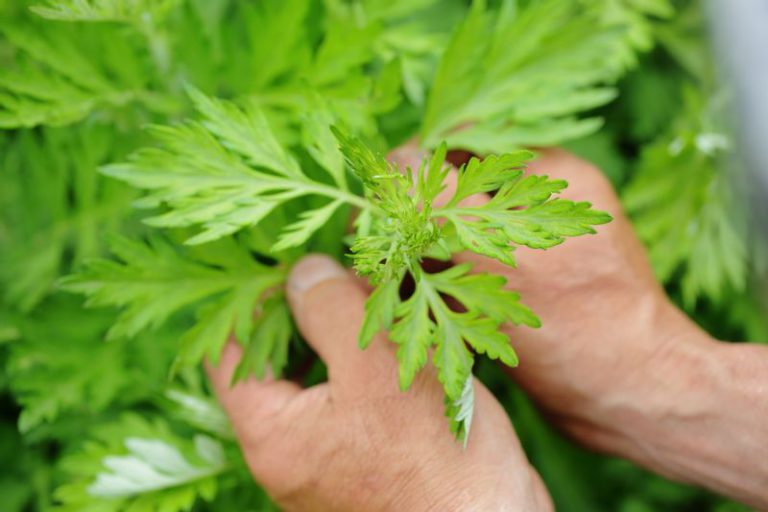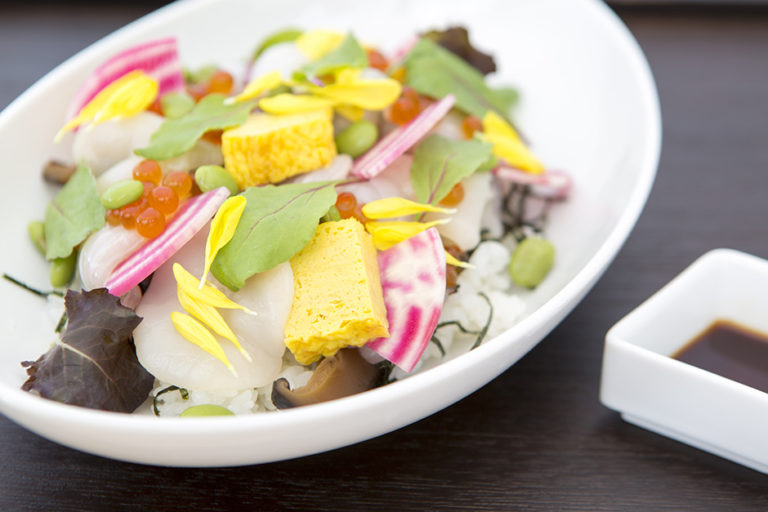Sakaamigamo Attracts the Attention of World Class Chefs
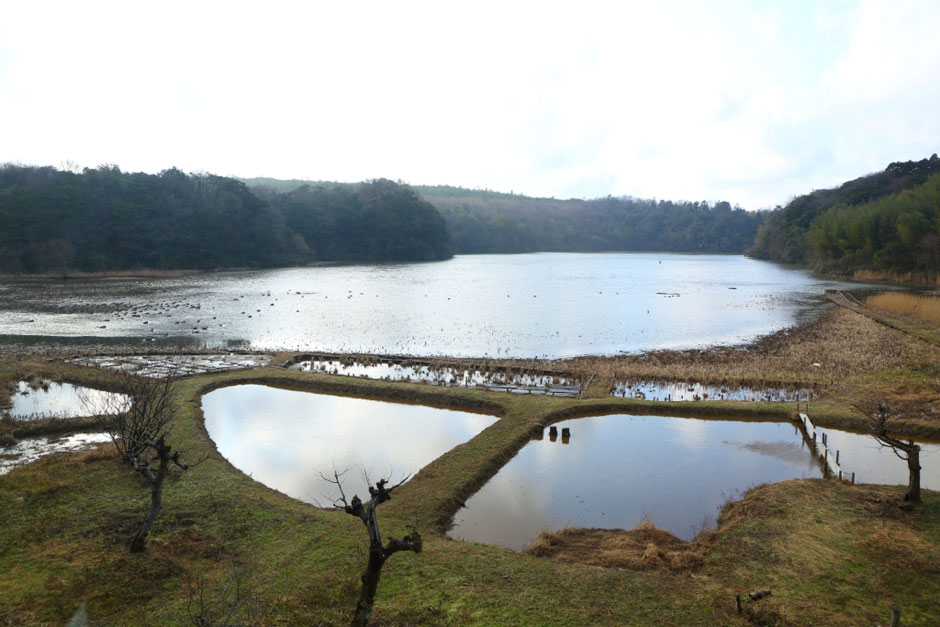
Only 300 Sakaamigamo Are Permitted to Be Caught in One Year
Hunting season for Sakaamigamo is three months in the winter. Hunting takes place around Katano-Kamoike in Daishoji, Kaga, known to be a wintering spot of many migrant birds such as wild geese and ducks. The permitted catch is very small (around 300 birds per year), and Sakaamigamo is rarely found in markets outside of Kaga.
The appealing feature of Sakaamigamo is not only its scarcity but also its delicious taste. Sakaamigamo has brightly reddish meat that is springy yet does not have the distinctive odor of wild fowl. Sakaamigamo meat is so delicious that top class restaurants in Japan and world famous restaurant owner-chefs send fervent requests for the meat. However, because only a small number of Sakaamigamo can be caught each year, it is rarely put on sale outside of Kaga. In fact only a small number of Japanese-style restaurants in Kaga are able to serve Sakaamigamo. It is truly a Rare Wild Duck.
The Reason Why Sakaamigamo Is Delicious?Catch It While It Tastes the Best without a Scratch
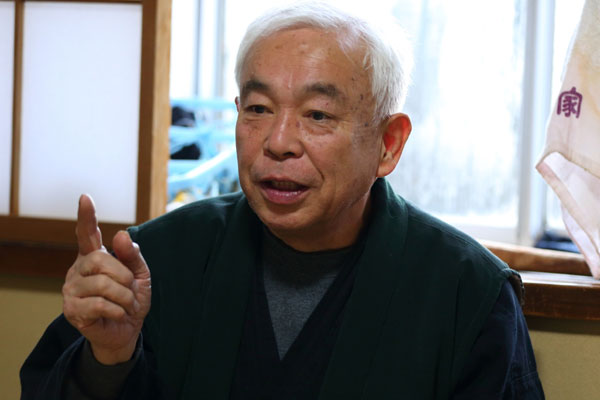
We asked master Sakaamigamo hunter and chairman of the Daishoji Duck Hunting Zone Cooperative, Mr. Toyotaka Ikeda, to tell us the reason that Sakaamigamo is so delicious. “It’s because we catch the wild ducks at the peak of their flavor without hurting them.” There are three reasons for delicious Sakaamigamo in this simple reply.
First of all, Sakaamigamo is a type of completely non-domesticated, wild duck. It eats mainly grain, which produces well-balanced meat and fat for great flavor.
The second point is that they are hunted at the peak of their flavor. Sakaamigamo hunting takes place late in the afternoon for just 15 minutes before hungry ducks fly off to nearby feeding grounds, which means these ducks have almost nothing in their stomach. This keeps the meat and internal organs fresh for several days after they are caught and prevents the odor usually associated with wild fowl.
The third point is that wild ducks are caught with a special net called Sakaami rather than shot. When a gun is used, blood seeps into the meat. This is what causes the meat to give off an odor. Wild ducks caught in special nets in the air are captured unwounded since they are caught in trees. This prevents the characteristic wild game odor (wild fowl meat). The delicious flavor valued by top chefs around the world is made possible by this simple and rational hunting method.
Sakaami Method: An Extremely Specialized, Old Hunting Method
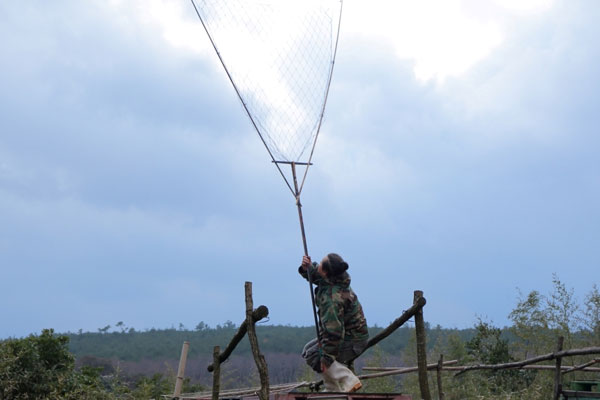
This specialized hunting method dates back to the Edo Period (1603?1868) and has been practiced for more than 300 years. Sakaami is made with wooden stick in the shape of a Y with net stretched in the V section. It is thrown up in air just as the wild ducks fly over a low hill, and made so that it can be easily thrown straight up in the air to catch the bird.
Hunters hide in the darkness and throw the Sakaami into the air when they hear the flapping of wings. It only takes a moment for ducks to fly over where hunter is hiding. It is said that even skilled hunters find it difficult.
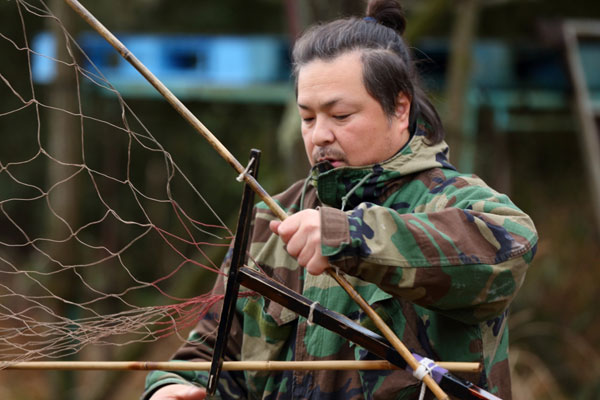
“You cannot hunt with a Sakaami method unless you have knowledge and experience. You need to know where the feeding grounds are and which way the ducks will fly by the direction of wind. Wild ducks are smart. They will not fly in the same direction every time. You really need to concentrate,” says Ikeda.
You have to pay attention to the direction the wind is blowing and listen to the sound of flapping wings. You confront nature with your five sharpened senses. The split second encounter with a wild duck is similar to Samurai swordsmanship. Sakaami hunting began when the Daishoji Lord encouraged it as mental and physical training for his followers. That may be why it is similar to swordsmanship.
Wetland and Traditional Culture Preserved by Sakaami Hunters
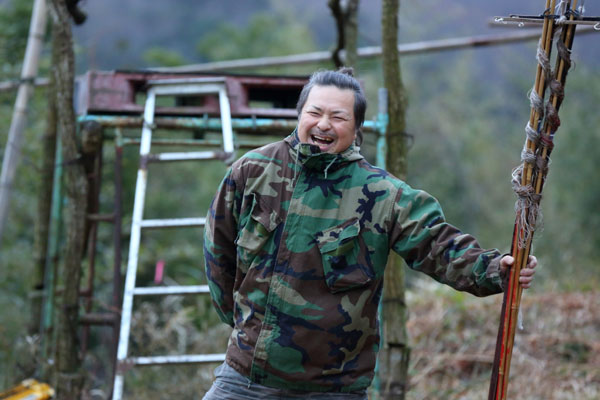
One of the main reasons Sakaami hunting has been practiced for over 300 years is because of the Katano-Kamoike and the preservation of the breeding environment for water birds that gather here. Sakaami hunters take measures to preserve the environment of the wetland during the non-hunting season, e.g. they take turns watching over the hunting ground to prevent poaching. In the summer, when the grass begins growing in the wetland, hunters cut it to prevent erosion of land into the wetland area.
Approximately 3,000 wild ducks fly to Kamoike Pond each year, but hunters only catch 10% of the flock. Practicing this traditional method with an eye on the future maintains the population by preventing excessive hunting, which in turn preserves the natural ecosystem of the wetland.
These activities along with the wise use of natural resources by hunters have been widely praised, and the wetland was registered as a Ramsar Site (Convention on Wetlands of International Importance, especially as Waterfowl Habitat) in 1993.
At one time, the number of Sakaami hunters dropped. However, Kaga City recognized the cultural value of this method and proactively sought to hand it down. The city’s effort has succeeded in increasing the number of hunters to nearly 30. Toshinobu Nakamura was himself captivated by the charm of Sakaami hunting and became a hunter three years ago with support provided by Kaga City.
“This method may be inefficient; but it is important to preserve tradition, and I am proud of being a part of it. Sakaami hunting has been designated by Ishikawa Prefecture as a folk-cultural property, and I will preserve it with the hope that it may someday be designated a national cultural property.”
Savoring Sakaamigamo in the Traditional Kaga Dishes at Yamagishi
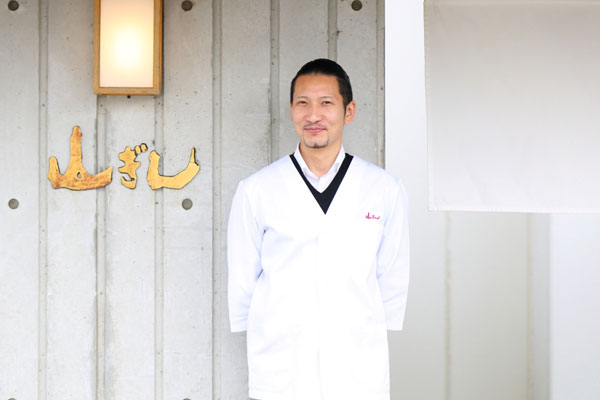
At the end of the interview, we visited Yamagishi, one of the few Japanese-style restaurants in Kaga that serves Sakaamigamo. Kazunobu Yamagishi, a 5th generation chef, is also a Sakaami hunter, which makes it possible for him to serve rare, traditional Kaga Sakaamigamo dishes.
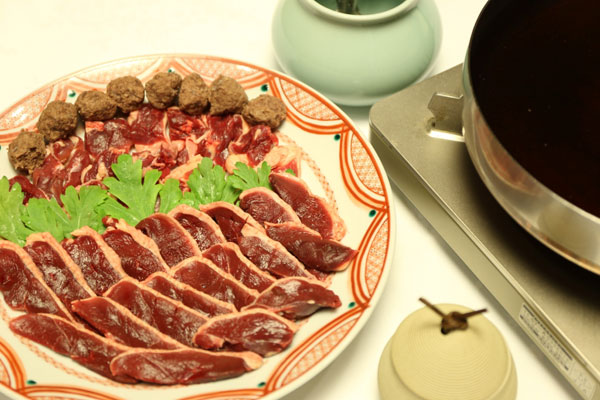
We had simmered Sakaamigamo liver and gizzards, and other a la carte dishes. Their specialty is the traditional Kaga Jibu-style sukiyaki with wild duck.
The soup of wild duck bones is rich and the meatballs including pounded gristle, breast meat and leg meat, are chewy yet melt in your mouth. Meat is coated with flour before being put in the pot to lock in its flavor, and broiled in its beautiful shape. Wasabi (Japanese horseradish) is added in the pot as a condiment. Its tart taste mellows in the hot pot, giving a touch of its aroma and bringing out the sweetness of the soup.
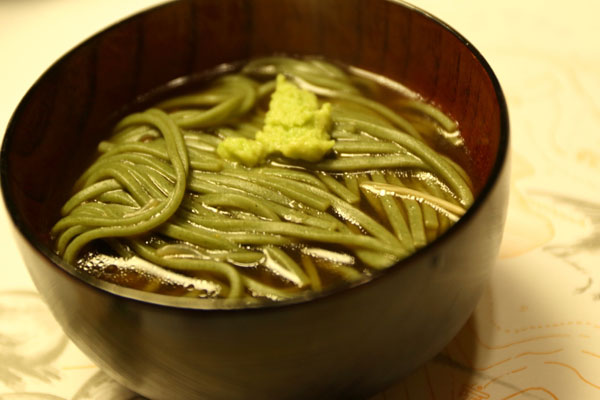
Mugwort soba noodles are added to the delicious soup at the end. Its refreshing aftertaste fills you with satisfaction and happiness as the delicious flavor of the Sakaamigamo meat lingers.
Sakaami hunting has been passed down from generation to generation, and the succession of this tradition has led to coexistence between nature and the citizens of Kaga.
There exists a food culture that cannot be fully expressed by the delicious flavor and scarcity of Sakaamigamo that is attracting the attention of world class chefs.


